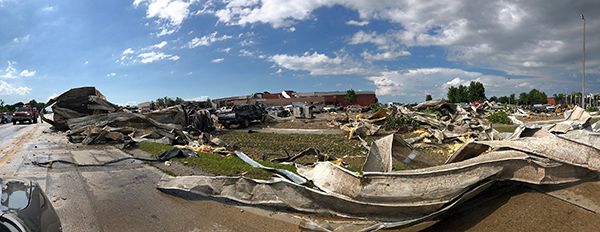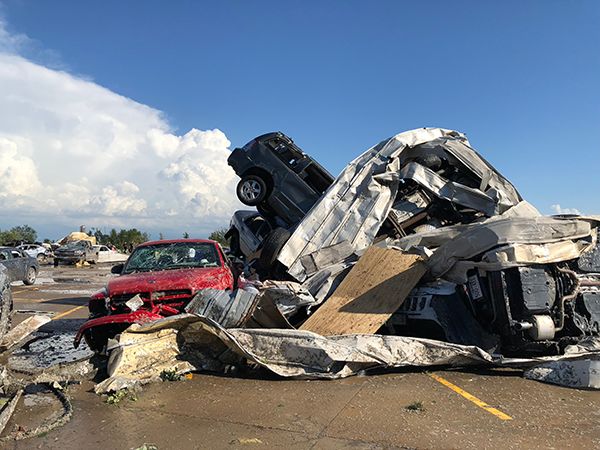Exploration abandoned Army base. The idea set me on fire Sunday morning, and by Sunday afternoon we were hustling to find one of the best exploration options the Twin Cities has to offer. Much more successful than the day before.
Let me say off the top, the three of us had tried to find this place before. I got a tip from a fellow explorer through the Abandoned Minnesota Facebook Page and we were off to the races. It’s called the Twin Cities Army Ammunition Plant, and there was so much more to it that we ever thought. Here’s the first video, with pics and the plant’s history down below.
Here’s the link to my entire photo collection. https://www.facebook.com/chad.smith.75685/media_set?set=a.3017756371618112&type=3&uploaded=110
A mnopedia.org article says the place was first authorized in 1941, making contributions to the nation’s armed forces for the next half a century.

As the U.S. was building up to World War 2, FDR advocated for the U.S. to take the lead as the “Great Arsenal of Democracy.” His aid strategy was laid out in the Lend-Lease Act. It used government-owned, contractor-operated ammo-manufacturing plants to provide supplies overseas.
The Army Ordnance Department authorized construction of what was then called the “Twin Cities Ordnance Plant.” Sporting ammunition manufacturer Federal Cartridge Corporation of Anoka was contracted to run the facility.
Once the place was fully operational, thousands of workers from across the Twin Cities worked around the clock in three shifts

I talk several times about the scale of the entire place during our exploration. Just to give you a sense of how large the base was, mnopedia.org says it actually began to function “like a small city.” The base had it’s own security/police force, hospital system, fire department, bus system, and a rail terminal. There were social elements to help the people feel more together, including a plant newspaper, intramural sports leagues, and even its own choir to help maintain morale.

The initial building we came up to (the subject of the first video) was much larger than we first thought. A couple of the more veteran explorers we’ve run into said it was the actual munitions plant but I have no idea if it’s true or not. It certainly looked big enough, but no matter what, this was the coolest building I’ve been in so far. All it took was a quick duck through a hole in the fence and we were in the front door.
I remember thinking as we walked down the path to that first building, “That’s all there is?” But there was so much more to it. We found what looked like locker rooms, bathrooms, a loading dock near the back, as well as an upstairs to the place. Really a lot of fun! The only thing I didn’t find? Not a single “No Trespassing” sign anywhere.
Those two explorers we talked to said “head east on the path in front of the first building. You won’t believe what you’ll find out there to explore.” They weren’t kidding. I thought the munitions plant building was big. We found a much-larger building to the east, complete with kitchen, multiple full size shower rooms, as well as bunkers, several other smaller outbuildings, and so much more.

and trying to figure out what it used to do. This one, I have no idea. (Photo by
Chad Smith)
By the way, I’ve been looking for a map showing how the buildings were laid out and used. Can’t find one, so if you know differently about something and I’m wrong, drop me a note so I’ll know too?
The most interesting thing to happen when we got to the big building involved long boarders, which I believe are the modern edition of our skateboards we played with growing up. Kylie was taking some video in one of the larger rooms when she heard music playing and had no idea where it was coming from. She played the video back on her phone and as deaf as I am after two-plus decades in radio, I could hear it too.
We’d just watched a found-footage movie called “Sanatorium,” and one of the things the cast found in that big old place was a radio playing music. Why spooky, you ask? It wasn’t plugged in and didn’t have batteries! While I’m not a big believer in the paranormal, I can’t lie and say I wasn’t a little spooked in the back of my mind.

solid. (Photo by Chad Smith)
The answer itself was decidedly less spooky. There were teenagers upstairs who were hanging out and playing their tunes.
The other thing we noticed was the debris throughout the largest building had been swept to one side of every hall in the place. “Well that’s strange,” I thought. Turns out, there were a couple young guys there with long boards who either found or brought along a big push broom. While it was making the place look much nicer, the smooth concrete floors made for some excellent long boarding, once all the debris was out of the way. Smart!
At the end of World War 2, the plant began gathering up and storing ammunition for the future. The plant cranked up production for the Korean War, the Vietnam War, and every other conflict that took place over the course of its 50-year existence, even drawing a lot of protesters during the Vietnam War.

concerned. This is fantastic. (Photo by Chad Smith)
Environmental concerns led to an agreement for a big cleanup effort, funded by the Army, which began selling off portions of the property. As near as I can tell, Ramsey County owns the land after buying it in 2013. If there are redevelopment plans in the works, what they plan to build there depends on what source your reading. After doing some research, there are a lot of different ideas on what to do with that place.
However, there is so much land there, wouldn’t it be a little cost-prohibitive? It would be too bad if those buildings went away,. They’d take a lot of American/Minnesota history with them, once they’re gone.



